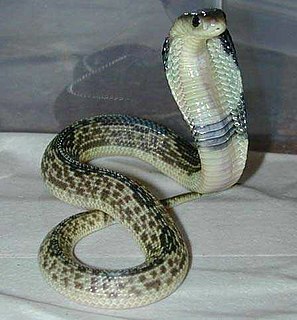Related Research Articles

CITES is a multilateral treaty to protect endangered plants and animals. It was drafted as a result of a resolution adopted in 1963 at a meeting of members of the International Union for Conservation of Nature (IUCN). The convention was opened for signature in 1973 and CITES entered into force on 1 July 1975.
The BernConvention on the Conservation of European Wildlife and Natural Habitats, also known as the Bern Convention, is a binding international legal instrument in the field of Nature Conservation, it covers the natural heritage in Europe, as well as in some African countries. The Convention was open for signature on 19 September 1979 and came into force on 1 June 1982. It is particularly concerned about protecting natural habitats and endangered species, including migratory species.

The Geoemydidae are one of the largest and most diverse families in the order Testudines (turtles), with about 70 species. The family includes the Eurasian pond and river turtles and Neotropical wood turtles.

The Chilean dolphin, also known as the black dolphin, is one of four dolphins in the genus Cephalorhynchus. The dolphin is only found off the coast of Chile; it is commonly referred to in the country as tonina.

The Burmese star tortoise is a critically endangered tortoise species, native to the dry, deciduous forests of Myanmar (Burma). It is close to extinction in Myanmar, as it is eaten by the native Burmese.

Siebenrockiella leytensis is a species of freshwater turtle endemic to the Philippines. It is classified as critically endangered. It is known as the Philippine forest turtle, the Philippine pond turtle, the Palawan turtle, or the Leyte pond turtle. Despite the latter common name, it does not occur in the island of Leyte but is instead native to the Palawan island group. It is locally known as bakoko in Cuyonon.

Darwin's fox or Darwin's zorro is an endangered canid from the genus Lycalopex. It is also known as the zorro chilote or zorro de Darwin in Spanish and lives on Nahuelbuta National Park, the Cordillera de Oncol, Cordillera Pelada in mainland Chile and Chiloé Island. This small, dark canine weighs 1.8 to 3.95 kg, has a head-and-body length of 48 to 59 cm and a tail that is 17.5 to 25.5 cm. Darwin's fox displays no key differences between Male and Female other than the fact that the male has a broader muzzle. Males also display no territorial behavior and aren't aggressive towards other males roaming around their territory.

The Palawan peacock-pheasant is a medium-sized bird in the family Phasianidae.
The Habitats Directive is a directive adopted by the European Community in 1992 as a response to the Berne Convention. The European Community was reformed as the European Union the following year, but the directive is still recognised.

The Convention on the Conservation of Migratory Species of Wild Animals, also known as the Convention on Migratory Species (CMS) or the Bonn Convention, is an international agreement that aims to conserve migratory species throughout their ranges. The Agreement was signed under the auspices of the United Nations Environment Programme and is concerned with conservation of wildlife and habitats on a global scale.

The Mexican alligator lizard, also known as the green arboreal alligator lizard, is an endangered species of lizard endemic to the Sierra Madre Oriental highlands of Mexico. It can be found in the states of Puebla, Veracruz, and Oaxaca. It was originally described under the genus Gerrhonotus as Gerrhonotus gramineus by Edward D. Cope in 1864.

The short-tailed chinchilla —also called the Bolivian, Peruvian, or royal chinchilla—is an endangered species of South American rodent, and one of two species in the genus Chinchilla. Their original native range extended throughout the Andes Mountains of Argentina northwest, Chile, Peru, and Bolivia. These animals were exploited for their luxurious fur, causing their numbers in the wild to dwindle. The other species of chinchilla is also endangered; C. lanigera, or the long-tailed chinchilla, is the wild ancestor of the domestic chinchilla, which is commonly raised as a pocket pet throughout the world.

The painted terrapin, painted batagur, or saw-jawed turtle is a species of turtles in the family Geoemydidae. It was formerly in its own genus, Callagur, but has been reclassified to the genus, Batagur.

Mauremys reevesii, commonly known as the Chinese pond turtle, the Chinese three-keeled pond turtle, or Reeves' turtle, is a species of turtle in the family Geoemydidae, a family which was formerly called Bataguridae. The species is native to East Asia.

The hedgehog seahorse is a species of fish of the family Syngnathidae. It inhabits coastal waters from India and Sri Lanka to Taiwan and northern Australia. It is threatened by overfishing, as both targeted catch and bycatch. This species is ovoviviparous, with males carrying eggs in a brood pouch before giving birth to live young.
Dalbergia occulta is a species of flowering plant in the legume family Fabaceae. It is endemic to Madagascar. Its original description was based on a single collection, which explains its botanical name.

The Javan spitting cobra, also called Indonesian cobra, is a species of cobra in the family Elapidae, found in the Lesser Sunda Islands of Indonesia, including Java, Bali, Lombok, Sumbawa, Flores, Komodo, and others.
References
- ↑ "Appendices I, II and III". CITES Secretariat. CITES. Geneva, Switzerland: Convention on International Trade in Endangered Species of Wild Fauna and Flora. 4 April 2017. Archived from the original on 2017-04-09. Retrieved 21 September 2017.
